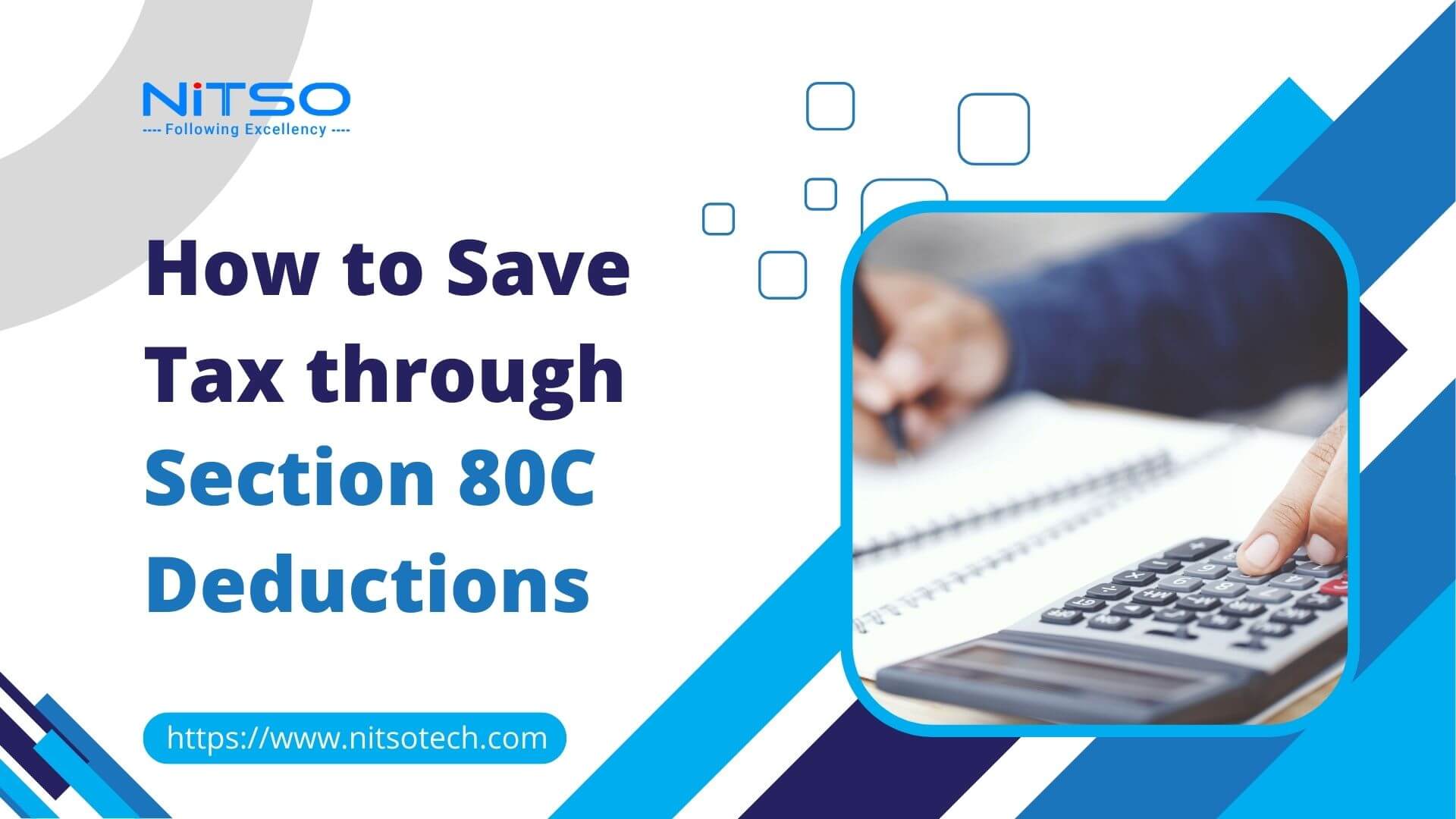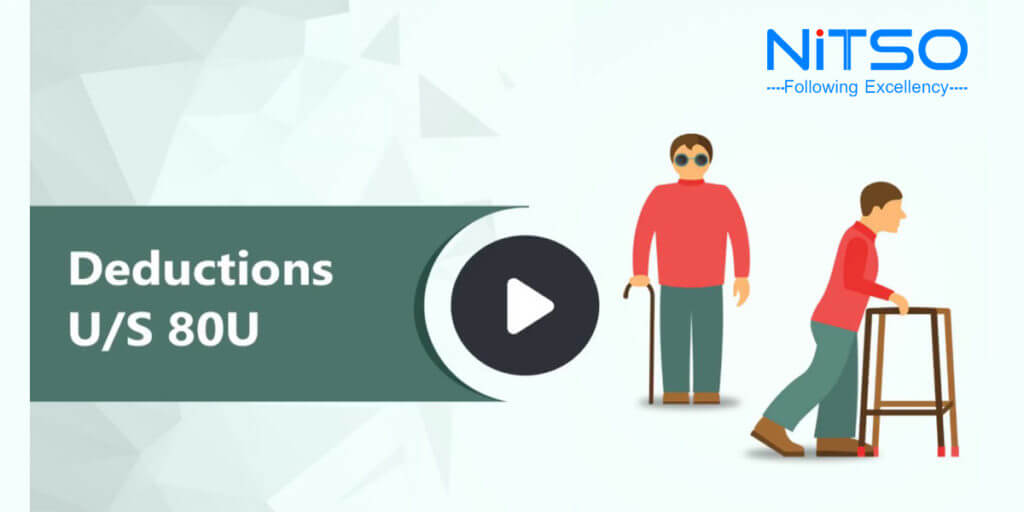Saving taxes is one of the prime financial goals for working professionals and investors in India. And Section 80C of the Income Tax Act provides one of the most useful options to reduce your taxable income and take home more of your hard-earned money. Availing deductions under Section 80C should be an integral part of your tax planning strategy.
This comprehensive guide on Section 80C aims to provide in-depth information on all aspects of this tax-saving section.
Whether you are a salaried individual, businessman, senior citizen or housewife, understanding Section 80C and utilizing it optimally can put more money in your hands. Read on to find out all you need to know to maximize your tax savings under Section 80C.
Table of Contents
What is Section 80C?
Section 80C of the Income Tax Act allows Indian taxpayers to claim deductions on specified investments and expenses up to ₹1.5 lakhs in a financial year. This deduction amount can be claimed from your gross total income, thereby reducing your taxable income.
The Section 80C deduction aims to encourage taxpayers to channel savings into financial instruments that also benefit the economy. The investments and expenses qualifying for deductions under Section 80C cover a wide range, including tax-saving mutual funds (ELSS), provident funds, life insurance premiums, home loan principal repayment, PPF contributions, NSC purchases, tuition fees, etc.
Overview of Section 80C Tax Deductions
Section 80C covers a wide range of tax-saving investments and expenses that can help individuals reduce their taxable income. This section provides a quick overview of the available deductions, eligibility criteria, limits and common instruments used by taxpayers to save tax under 80C.
- Section 80C deductions can be claimed by all individual taxpayers in India, irrespective of their income levels or sources of income. Even non-earning family members like housewives and students can avail of this benefit.
- Up to ₹1.5 lakhs of your investments/expenses in a financial year (April to March) are eligible for a tax deduction under Section 80C. This limit is over and above the basic income tax exemption limit.
- You need to provide documentary proof of the investments/expenses when filing your tax returns to claim the 80C deductions. Examples of proof include EPF statements, life insurance premium receipts, bank certificates for NSC purchases, etc.
- The amount saved in taxes depends on your income tax slab. For instance, if you are in the 30% tax bracket, a ₹1.5 lakh 80C deduction will lower your tax outgo by ₹45,000.
- The unused Section 80C deduction amount cannot be carried forward to next year. The limit resets to ₹1.5 lakhs every financial year.
What are the Purpose and Benefits of Section 80C?
Why does Section 80C exist?
The Section 80C deduction was introduced with certain objectives in mind. This part explains the goals behind 80C implementation and how the tax-saving scheme benefits individual taxpayers in India as well as the wider economy:
- Encourage household savings and channel them into financial assets
- Mobilize funds for nation-building activities like infrastructure creation
- Make citizens self-reliant in old age through retirement planning
- Provide tax incentives for securing health and life by taking insurance
- Promote home ownership and creation of assets
- Make education and skill development affordable by providing tax breaks on tuition fees
Section 80C is one of the most beneficial tax deductions for salaried individuals, pensioners and self-employed taxpayers in India. The wide range of qualifying investments and substantial deduction limit of ₹1.5 lakhs make Section 80C an important tool for tax planning and wealth creation.
Types of Investments Eligible Under Section 80C
Section 80C isn’t just about saving tax; it’s also about making smart investment choices. This part covers various investment options like the Public Provident Fund (PPF), National Savings Certificate (NSC), Equity-Linked Savings Scheme (ELSS), and more, explaining how each one works and their role in your tax-saving strategy.
EPF Contributions
- Employee Provident Fund (EPF) is a compulsory retirement savings scheme for salaried individuals.
- Contributions up to 12% of basic salary and DA (subject to a cap of Rs. 1.5 lakhs) are eligible for deduction under Sec 80C.
- Includes employee’s contribution as well as employer’s matching contribution.
- EPF provides fixed returns of 8.1% p.a. along with the safety of the principal.
PPF Contributions
- Public Provident Fund (PPF) is a long-term retirement savings option offering guaranteed returns.
- The maximum allowable contribution is Rs. 1.5 lakhs per financial year.
- PPF currently offers 7.1% p.a. interest, payable monthly.
- The minimum lock-in period is 15 years with an option for extensions in blocks of 5 years.
NSC Investments
- National Savings Certificate (NSC) is a fixed-income instrument issued by post offices.
- No maximum limit but only Rs. 1.5 lakhs qualifies for 80C deduction.
- NSCs have a maturity period of 5 years and interest accrues annually.
- The current interest rate offered is 6.8% per annum.
ELSS Mutual Funds
- ELSS or Equity Linked Savings Schemes are diversified equity mutual funds with tax benefits.
- Provides high inflation-adjusted returns over the long term.
- Offers the lowest lock-in of 3 years among 80C options.
- Ideal for investors with a high-risk appetite and growth orientation.
Life Insurance Premiums
- Premium paid for life insurance policies for self, spouse or children is eligible for deduction.
- Should be a pure insurance plan with a death benefit 10 times the annual premium.
- The maximum amount eligible for deduction is 10% of the sum assured, capped at Rs. 1.5 lakhs.
Home Loan Principal Repayment
- The deduction can be claimed on the principal portion of the home loan EMI for self-occupied property.
- No limit on deduction amount, and full EMI qualifies until exhausted Rs. 1.5 lakh Sec 80C limit.
- The interest portion of the home loan does not qualify for tax benefit under Sec 80C.
Limit and Eligibility
Section 80C deduction has certain limits and eligibility criteria that taxpayers should be aware of.
What is Section 80C Deduction Limit?
Here, we address the crucial question: How much can you actually save? We’ll break down the deduction limit under Section 80C, shedding light on how much of your investments can be saved from taxes.
- The maximum deduction allowed under Section 80C is Rs. 1.5 lakhs in a financial year.
- This overall limit of Rs. 1.5 lakhs applies collectively to all investments/expenses claimed under this section.
- If the total qualifying amount exceeds Rs. 1.5 lakhs, the deduction will be restricted to Rs. 1.5 lakhs only.
- The limit gets reset to Rs. 1.5 lakhs at the beginning of every financial year. Unused limits cannot be carried forward.
- A separate limit applies to Section 80CCC (Rs. 1.5 lakhs) and 80CCD (up to 10% of basic salary) deductions.
Who is Eligible for Section 80C Benefits?
Not everyone can avail of the benefits under Section 80C. In this part, we’ll clarify who qualifies for these deductions:
- Section 80C deduction can be claimed by individuals who are Indian residents for tax purposes.
- It can be claimed by earning as well as non-earning individuals. Even housewives, students and senior citizens are eligible.
- Deductions can be claimed by individuals only for investments made in their own name, spouse’s name or children’s name.
- Investments made in the name of parents, siblings etc. will not qualify for deduction for an individual taxpayer.
- Hindu Undivided Families (HUFs) cannot claim Section 80C benefits. The deduction is meant for individual taxpayers only.
- Non-resident Indians (NRIs) are also not eligible for Section 80C deduction.
In summary, Section 80C deduction eligibility is limited to resident individual taxpayers making investments for themselves, spouses or children. All other categories need to look at other sections for tax benefits.
How to Claim Deductions Under Section 80C?
Claiming deductions can seem complex, but it doesn’t have to be. The process of claiming Section 80C deductions during your tax filing involves providing supporting documents and correctly providing investment details. This section covers the step-by-step process to ensure you correctly claim the 80C benefit and reduce your tax liability.
What are the Documents Required for Section 80C Deduction Claims?
Any tax claim requires proper documentation. We list out all the necessary documents you need to have to successfully claim your Section 80C deductions.
- For every investment/expense claimed under 80C, relevant supporting documents need to be furnished as proof.
- For life insurance premiums, submission of a policy statement showing the premium paid is required.
- For PPF/EPF contributions, an account statement showing the amount credited is required as proof.
- For ELSS, the mutual fund statement showing units allotted against investment.
- For tuition fees, a receipt/certificate from an educational institution is required.
- All original documents need to be retained for up to 6 years in case of scrutiny by tax authorities.
How Does the Claiming Process Works?
The claiming process involves several steps. This overview ensures you understand each stage of the process, from gathering documents to filing your returns.
- Section 80C deduction has to be claimed in the year in which the investment is made, not when it matures.
- The deduction has to be claimed when filing your income tax returns for that financial year.
- If filing an ITR online, details of 80C investments have to be filled in the specified schedule to claim the deduction.
- In offline ITR forms, provide a break-up of all 80C investments in the relevant column of Part C.
- Ensure the full limit of Rs 1.5 lakhs is claimed if eligible, or the deduction amount will lapse.
What are the 5 Common Mistakes to Avoid When Claiming Section 80C Deductions?
It is not uncommon for taxpayers to make errors when claiming deductions under Section 80C, often losing out on tax benefits as a result. This section highlights the common blunders to avoid in order to seamlessly claim an 80C deduction and maximize your tax savings.
- Not providing supporting investment proofs to tax authorities.
- Claiming deduction in the wrong assessment year or carrying it forward.
- Claiming a deduction for investments made in the name of others (like parents, siblings etc).
- Entering the wrong IFSC code or other details results in a mismatch with IT records.
- Not claiming 80C deduction separately under each category (80CCC, 80CCD etc).
So in summary, provide valid documents as proof, claim deduction in the same year as investment, avoid data entry errors, and ensure you claim the full eligible amount.
How to Use a Section 80C Tax Calculator?
You can use online tax calculators or manually calculate your Section 80C tax benefit to estimate the potential savings.
Top Online Tax Calculator Tools for Section 80C
Calculating your tax savings under 80C is now easy and quick with online tax calculator tools. This section provides a list of the top free web-based calculators to get an estimate of how much tax you can potentially save through Section 80C investments.
- Many websites like ClearTax, BankBazaar, PolicyBazaar etc. offer free 80C tax benefit calculators.
- You need to enter details like your income, planned 80C investments, and residential status.
- The calculator will estimate your taxable income after the 80C deduction and calculate your overall tax liability.
- It also shows the tax amount saved compared to your liability without claiming Section 80C.
- Online calculators offer a quick and convenient way to estimate Section 80C tax savings.
How to Manually Calculate Tax Savings Under Section 80C?
For those who prefer the traditional approach, the tax savings from Section 80C deductions can be easily calculated with a step-by-step method.
Let’s understand this with an example.
Dishant is a salaried individual earning Rs. 8.5 lakhs annually. He has invested Rs. 1.5 lakhs in PPF and Rs. 50,000 in ELSS under Section 80C in 2022-23. Let’s see how his tax benefit under Section 80C is calculated:
Step 1: Calculate tax on total income without 80C deduction
Rohit’s total income = Rs. 8.5 lakhs
Tax on Rs. 8.5 lakhs is Rs. 1,62,500 (as per old tax regime rates for 2022-23)
Step 2: Deduct Section 80C investments from total income
Total Income – Sec 80C investments = Taxable Income
Rs. 8.5 Lakhs – (Rs. 1.5 Lakhs + Rs. 50,000) = Rs. 7 Lakh
Step 3: Recalculate tax on reduced taxable income post 80C deduction
Tax on Rs. 7 lakh income is Rs. 1,12,500
Step 4: Calculate tax benefit by comparing tax in Step 1 and Step 3
Tax before 80C (Step 1) – Tax after 80C (Step 3) = Tax saved
Rs. 1,62,500 – Rs. 1,12,500 = Rs. 50,000
So in this example, Section 80C investments of Rs. 2 lakhs helped save Rs. 50,000 in income tax for the individual.
This demonstrates how you can do a quick manual calculation of the tax benefit obtained from claiming deductions under Section 80C of the Income Tax Act. Online tax calculators also provide the estimated tax savings based on the 80C deduction you enter.
Conclusion
We have now come to the end of this detailed guide on Section 80C deductions. As one of the most widely used methods for tax saving, having a solid understanding of Section 80C can help you optimize your investments and significantly reduce your tax outgo each year.
Also, keep yourself updated on any changes in the conditions around Section 80C introduced by the government through annual budgets or finance bills. We hope this guide will help you chart a tax-efficient investment strategy and keep more of your hard-earned money with you!
Common Frequently Asked Questions in Section 80C
What is the maximum deduction I can claim under Section 80C in one financial year?
The total deduction available under Section 80C is capped at Rs. 1.5 lakhs in a financial year. Investments exceeding this limit cannot be claimed as a deduction.
Can I claim a deduction on the life insurance premium paid for my parents or siblings?
No, you can only claim a tax deduction on life insurance premiums paid for yourself, spouse or dependent children.
Is there any lock-in period for investments to be eligible for 80C benefits?
Yes, most instruments have a minimum lock-in like 5 years for NSC, 15 years for PPF, and 3 years for ELSS.
Can I split my Section 80C deduction between two financial years?
No, the entire deduction up to Rs. 1.5 lakhs has to be claimed in the single financial year when the investment was made.
Is there any limit on a number of investments I can claim under Section 80C?
There is no limit on the number of investments. You can claim deductions for multiple investments under 80C subject to the overall limit of Rs. 1.5 lakhs.
What is the last date for making Section 80C investments for claiming a deduction in a financial year?
The investments have to be made by 31st March to claim a deduction in that financial year.
Can I claim a deduction for repayment of the home loan principal under Section 80C?
Yes, principal repayment on a home loan for a self-occupied property can be claimed as a deduction under Section 80C, up to the overall limit of Rs. 1.5 lakhs.
Which is better for saving taxes – PPF or ELSS?
PPF offers guaranteed, safe returns while ELSS carries market risk but potential for higher inflation-adjusted returns in the long run. Your risk appetite should guide whether PPF or ELSS is better for you.
How is Section 80C different from Sections 80CCC and 80CCD?
Section 80CCC is exclusively for annuity pension plans while 80CCD is for NPS contributions. Sections 80CCC and 80CCD have separate deduction limits over and above 80C’s 1.5 lakh limit.
Can I claim the tuition fee paid for my child under Section 80C?
Yes, you can claim a deduction for tuition fees paid for up to two children under Section 80C. No deduction is allowed for tuition fees paid for yourself.
Is there any upper-income limit to claim Section 80C deductions?
No, Section 80C deduction can be availed by individuals in any income tax slab, irrespective of how much they earn. There is no upper-income limit for claiming this deduction.
What documents are required to claim tax deductions on health insurance premiums?
You need to submit copies of health insurance premium receipts and policy certificates showing your name as a policyholder to claim a deduction on health insurance premiums under 80C.








0 Comments